Abstract
A new, improved agar medium for the isolation of Streptococcus mutans, the etiological agent of dental caries, was developed. In contrast to mitis-salivarius agar, this medium not only recovers a greater number of S. mutans strains from most oral specimens but, because of its mannitol and sorbitol content, it also facilitates the differentiation of S. mutans from other oral streptococci, e.g., S. salivarius, S. mitis, and S. sanguis, which do not grow or produce scanty growth only after 10 days of incubation. The medium is easy to prepare because of its simple and unique composition, is characterized by the presence of an acid indicator, and can be utilized under aerobic and anaerobic conditions as well. The medium cannot be used to distinguish among the eight serotypes, a to g and SL-1, of S. mutans. Mannitol-utilizing bacteria such as streptococci (e.g., S. faecalis) and other microorganisms (e.g., Staphylococcus aureus) are able to grow on this medium and can be distinguished from S. mutans by their unique colony morphology.
Full text
PDF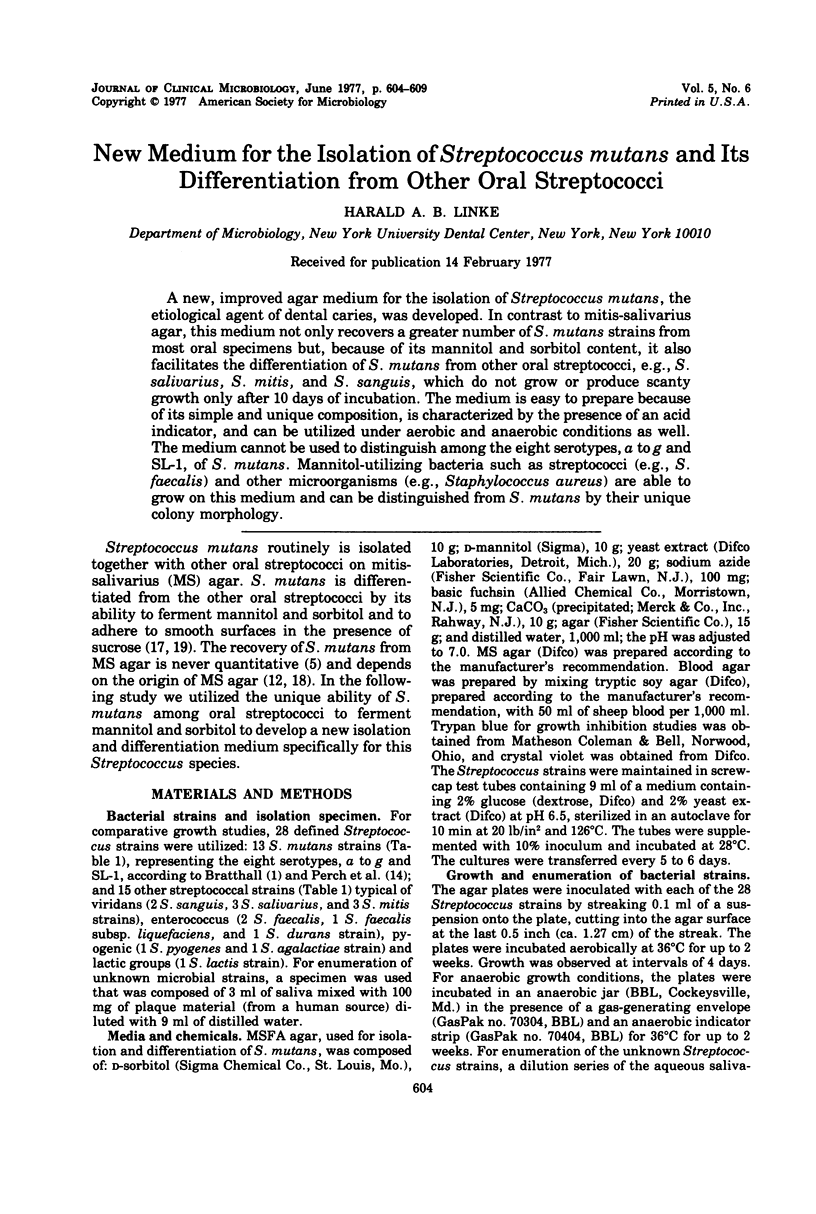
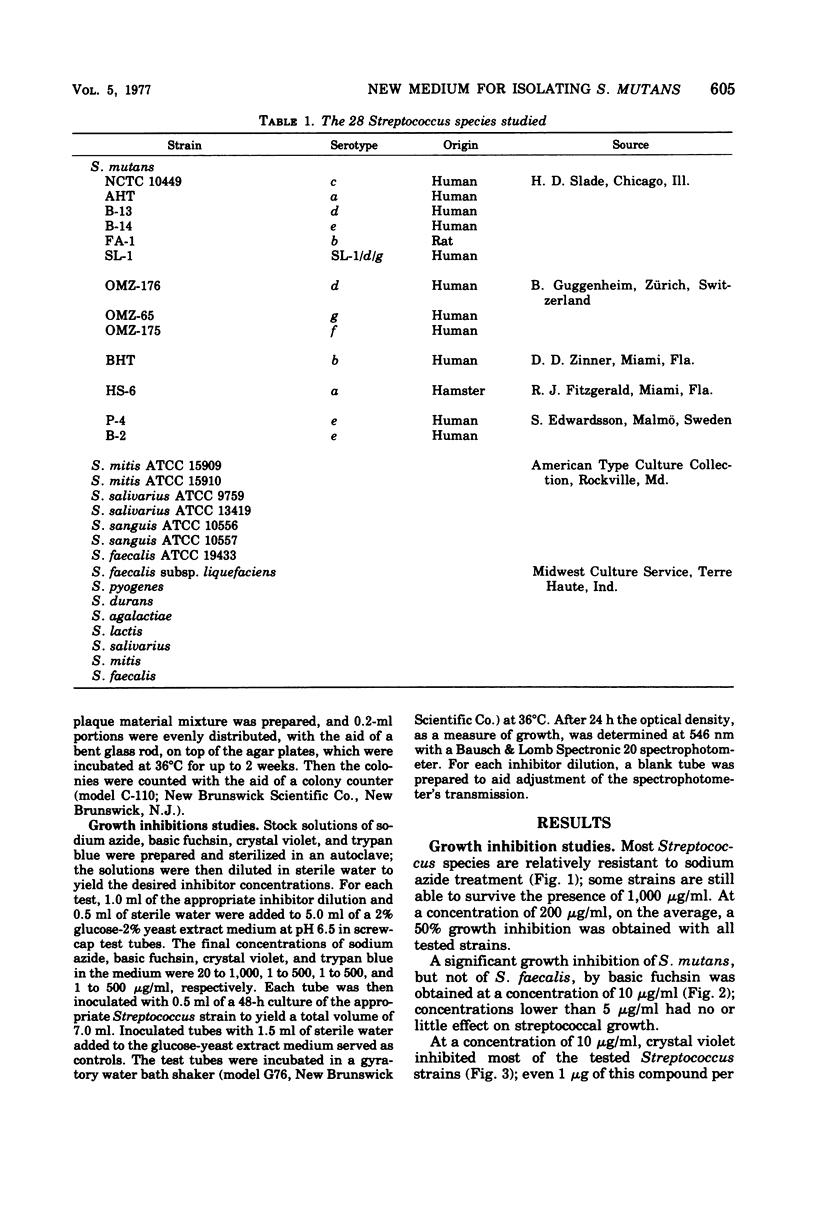
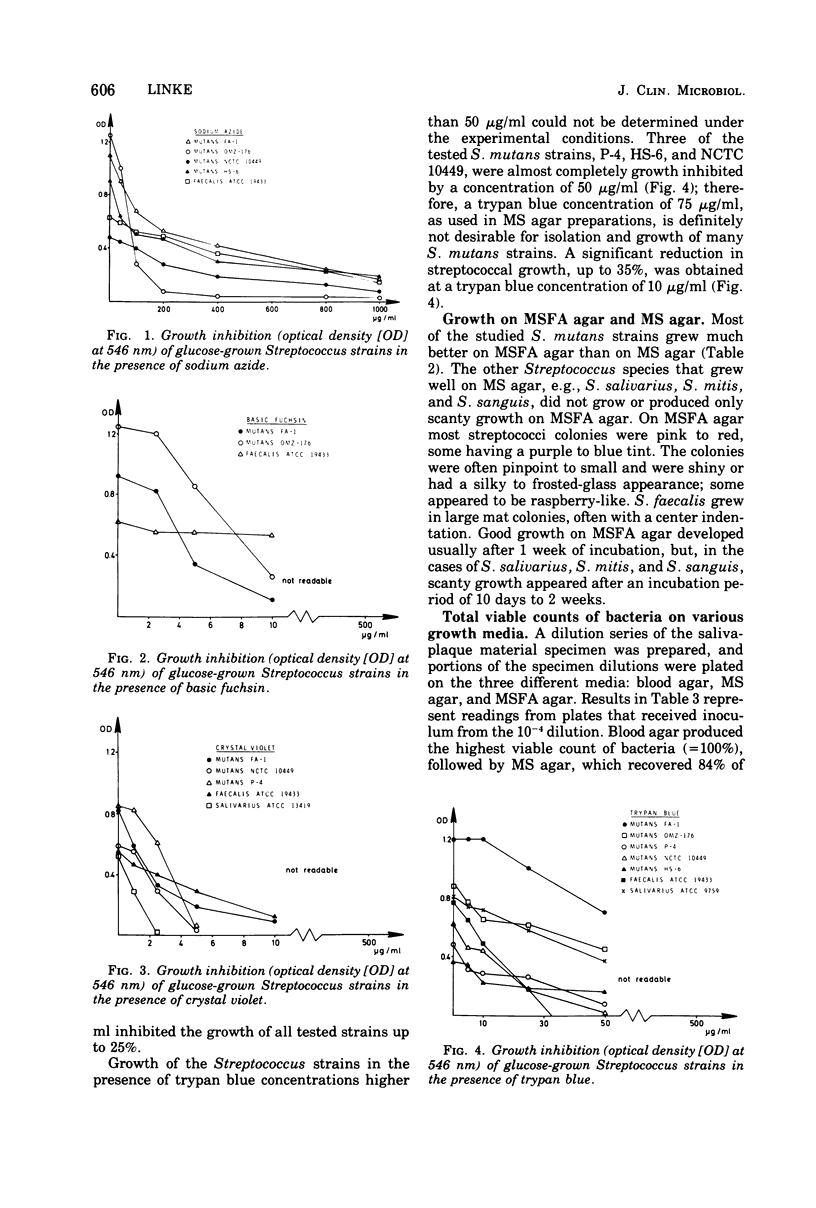
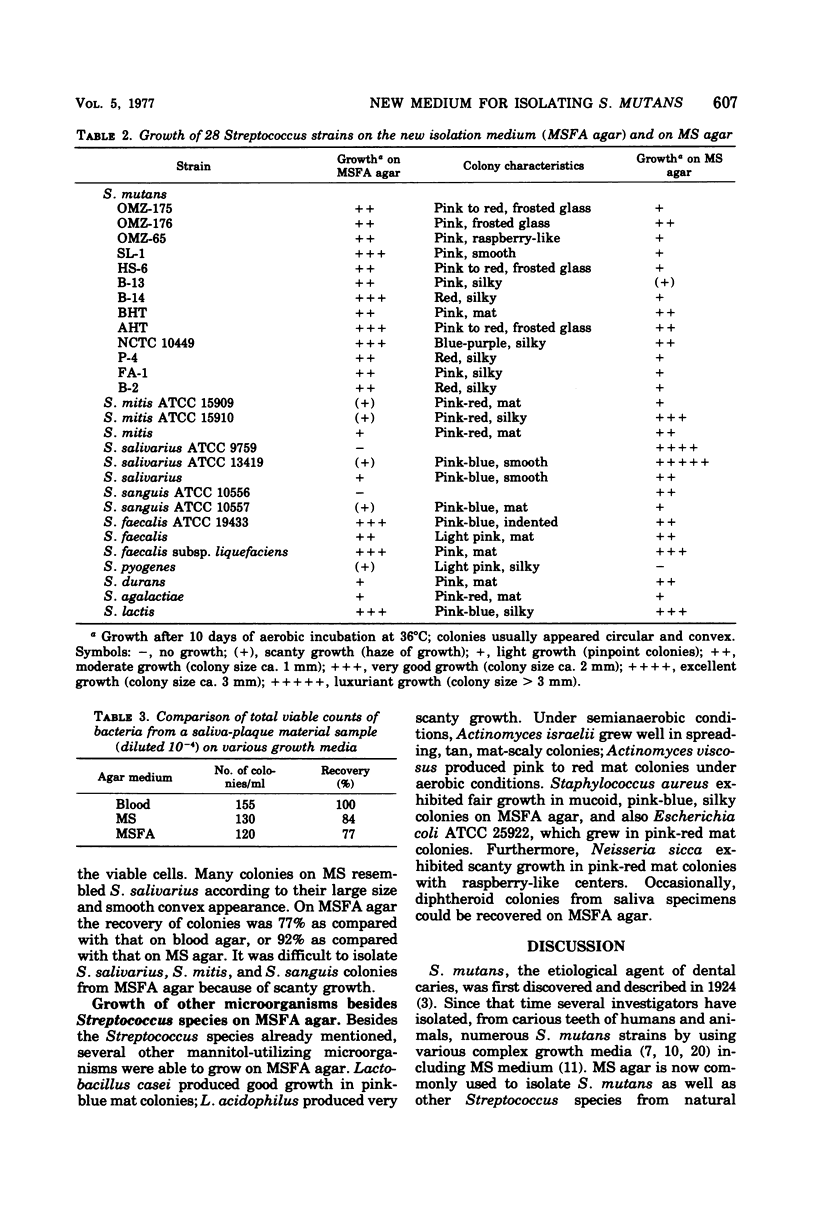
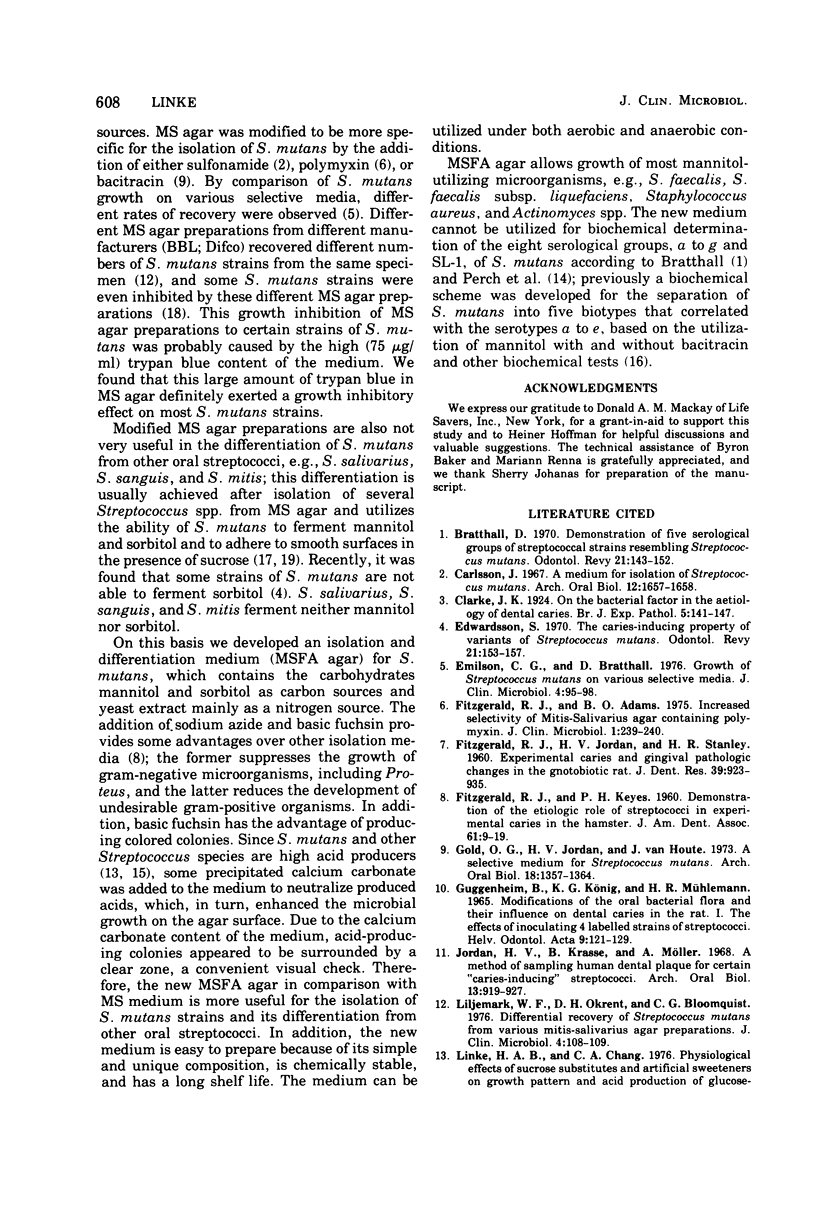
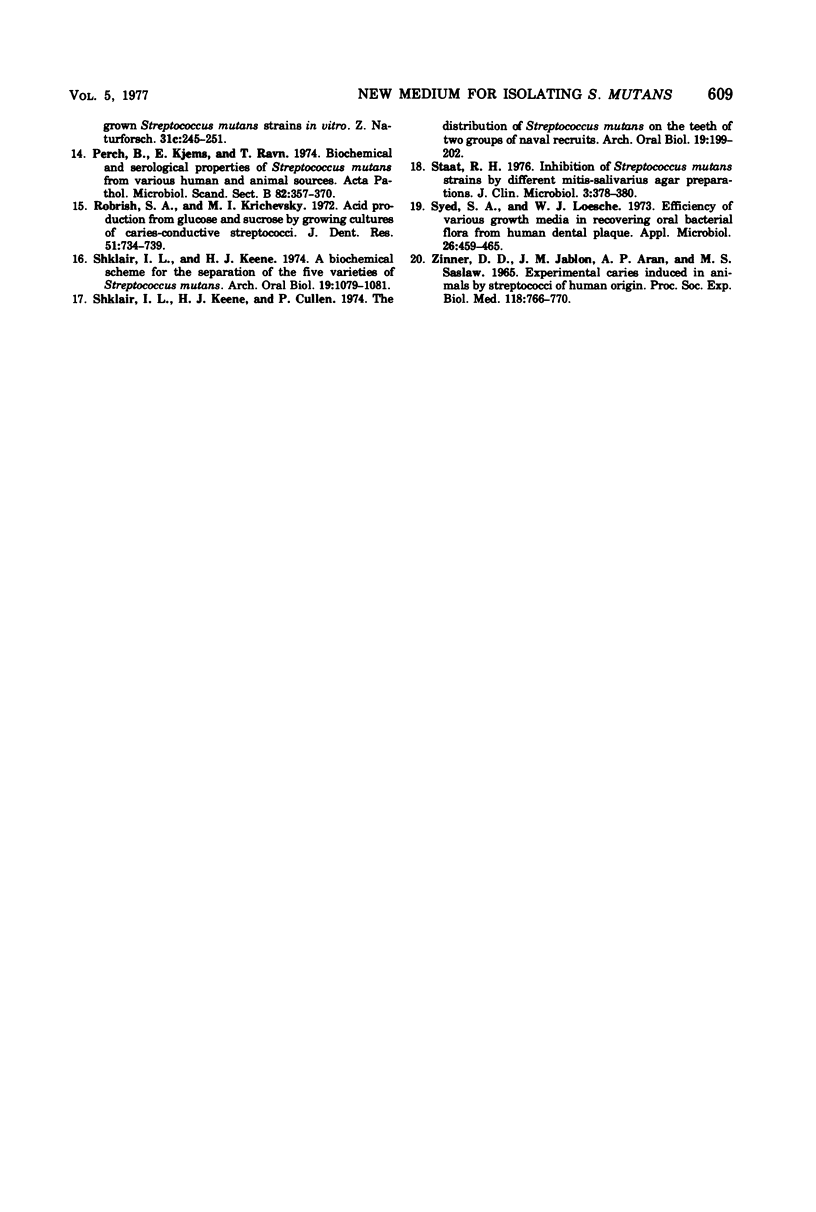
Selected References
These references are in PubMed. This may not be the complete list of references from this article.
- Bratthall D. Demonstration of five serological groups of streptococcal strains resembling Streptococcus mutans. Odontol Revy. 1970;21(2):143–152. [PubMed] [Google Scholar]
- Carlsson J. A medium for isolation of Streptococcus mutans. Arch Oral Biol. 1967 Dec;12(12):1657–1658. doi: 10.1016/0003-9969(67)90201-4. [DOI] [PubMed] [Google Scholar]
- Edwardsson S. The caries-inducing property of variants of Streptococcus mutans. Odontol Revy. 1970;21(2):153–157. [PubMed] [Google Scholar]
- Emilson C. G., Bratthall D. Growth of Streptococcus mutans on various selective media. J Clin Microbiol. 1976 Jul;4(1):95–98. doi: 10.1128/jcm.4.1.95-98.1976. [DOI] [PMC free article] [PubMed] [Google Scholar]
- FITZGERALD R. J., JORDAN H. V., STANLEY H. R. Experimental caries and gingival pathologic changes in the gnotobiotic rat. J Dent Res. 1960 Sep-Oct;39:923–935. doi: 10.1177/00220345600390052701. [DOI] [PubMed] [Google Scholar]
- FITZGERALD R. J., KEYES P. H. Demonstration of the etiologic role of streptococci in experimental caries in the hamster. J Am Dent Assoc. 1960 Jul;61:9–19. doi: 10.14219/jada.archive.1960.0138. [DOI] [PubMed] [Google Scholar]
- Fitzgerald R. F., Adams B. O. Increased selectivity of Mitis-Salivarius agar containing polymyxin. J Clin Microbiol. 1975 Feb;1(2):239–240. doi: 10.1128/jcm.1.2.239-240.1975. [DOI] [PMC free article] [PubMed] [Google Scholar]
- Gold O. G., Jordan H. V., Van Houte J. A selective medium for Streptococcus mutans. Arch Oral Biol. 1973 Nov;18(11):1357–1364. doi: 10.1016/0003-9969(73)90109-x. [DOI] [PubMed] [Google Scholar]
- Guggenheim B., König K. G., Mühlemann H. R. Modifications of the oral bacterial flora and their influence on dental caries in the rat. I. The effects of inoculating 4 labelled strains of streptococci. Helv Odontol Acta. 1965 Oct;9(2):121–129. [PubMed] [Google Scholar]
- Jordan H. V., Krasse B., Möller A. A method of sampling human dental plaque for certain "caries-inducing" streptococci. Arch Oral Biol. 1968 Aug;13(8):919–927. doi: 10.1016/0003-9969(68)90007-1. [DOI] [PubMed] [Google Scholar]
- Liljemark W. F., Okrent D. H., Bloomquist C. G. Differential recovery of Streptococcus mutans from various mitis-salivarius agar preparations. J Clin Microbiol. 1976 Jul;4(1):108–109. doi: 10.1128/jcm.4.1.108-109.1976. [DOI] [PMC free article] [PubMed] [Google Scholar]
- Linke H. A., Chang C. A. Physiological effects of sucrose substitutes and artificial sweeteners on growth pattern and acid production of glucose-grown Streptococcus mutans strains in vitro. Z Naturforsch C. 1976 May-Jun;31(5-6):245–251. doi: 10.1515/znc-1976-5-605. [DOI] [PubMed] [Google Scholar]
- Perch B., Kjems E., Ravn T. Biochemical and serological properties of Streptococcus mutans from various human and animal sources. Acta Pathol Microbiol Scand B Microbiol Immunol. 1974 Jun;82(3):357–370. doi: 10.1111/j.1699-0463.1974.tb02338.x. [DOI] [PubMed] [Google Scholar]
- Robrish S. A., Krichevsky M. I. Acid production from glucose and sucrose by growing cultures of caries-conducive streptococci. J Dent Res. 1972 May-Jun;51(3):734–739. doi: 10.1177/00220345720510030801. [DOI] [PubMed] [Google Scholar]
- Shklair I. L., Keene H. J. A biochemical scheme for the separation of the five varieties of Streptococcus mutans. Arch Oral Biol. 1974 Nov;19(11):1079–1081. doi: 10.1016/0003-9969(74)90099-5. [DOI] [PubMed] [Google Scholar]
- Shklair I. L., Keene H. J., Cullen P. The distribution of Streptococcus mutans on the teeth of two groups of naval recruits. Arch Oral Biol. 1974 Feb;19(2):199–202. doi: 10.1016/0003-9969(74)90214-3. [DOI] [PubMed] [Google Scholar]
- Staat R. H. Inhibition of Streptococcus mutans strains by different mitis-salivarius agar preparations. J Clin Microbiol. 1976 Mar;3(3):378–380. doi: 10.1128/jcm.3.3.378-380.1976. [DOI] [PMC free article] [PubMed] [Google Scholar]
- Syed S. A., Loesche W. J. Efficiency of various growth media in recovering oral bacterial flora from human dental plaque. Appl Microbiol. 1973 Oct;26(4):459–465. doi: 10.1128/am.26.4.459-465.1973. [DOI] [PMC free article] [PubMed] [Google Scholar]
- ZINNER D. D., JABLON J. M., ARAN A. P., SASLAW M. S. EXPERIMENTAL CARIES INDUCED IN ANIMALS BY STREPTOCOCCI OF HUMAN ORIGIN. Proc Soc Exp Biol Med. 1965 Mar;118:766–770. doi: 10.3181/00379727-118-29964. [DOI] [PubMed] [Google Scholar]


